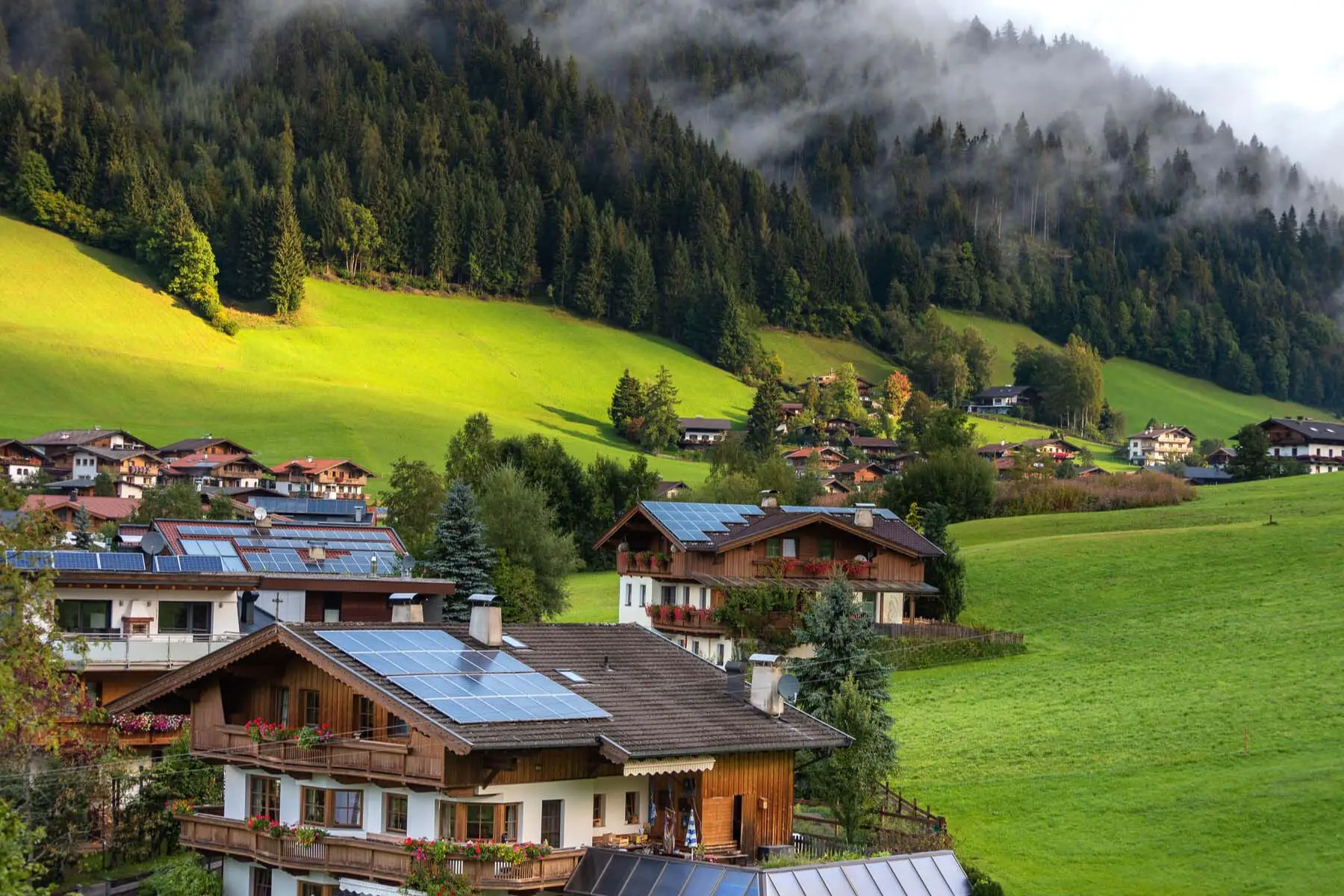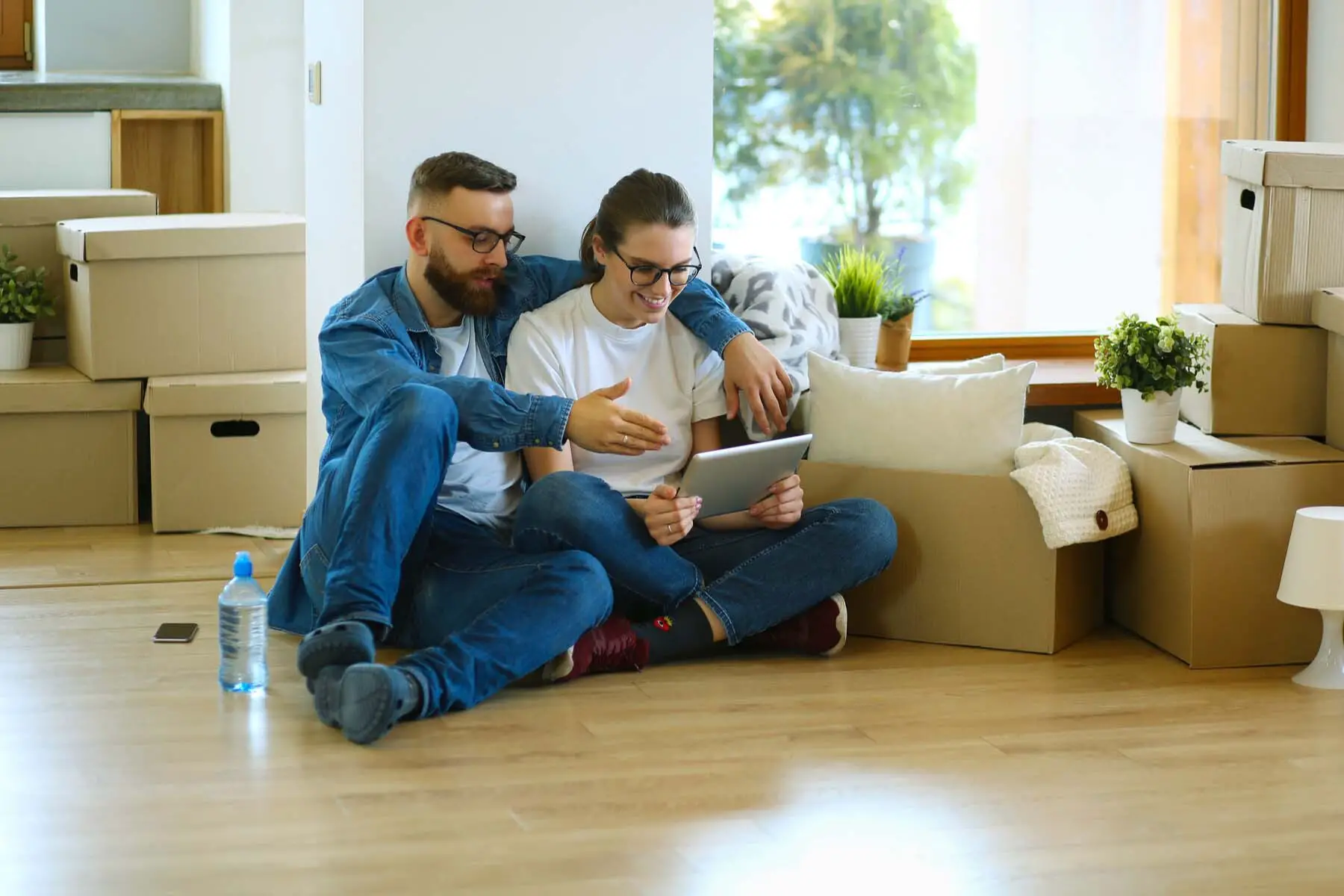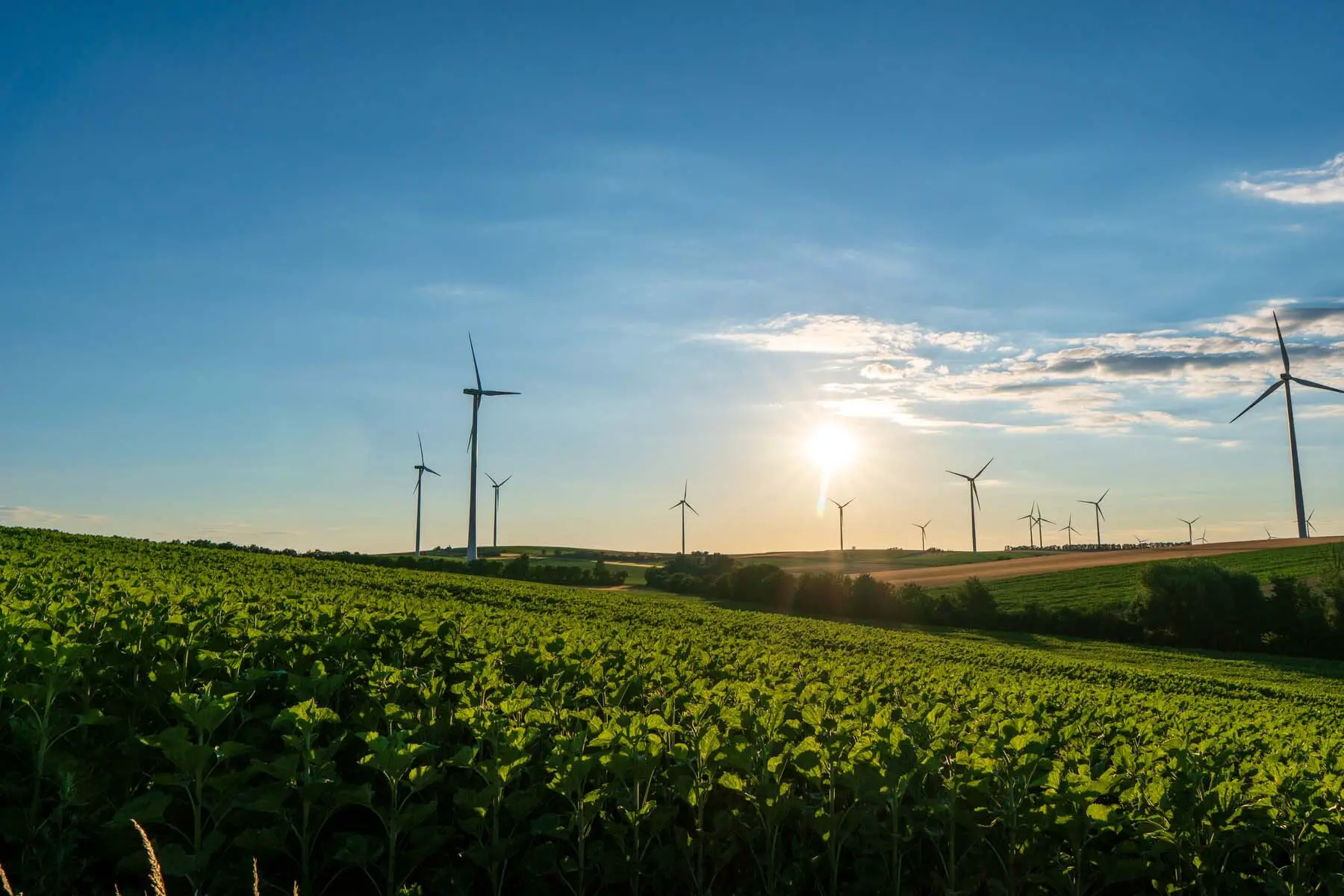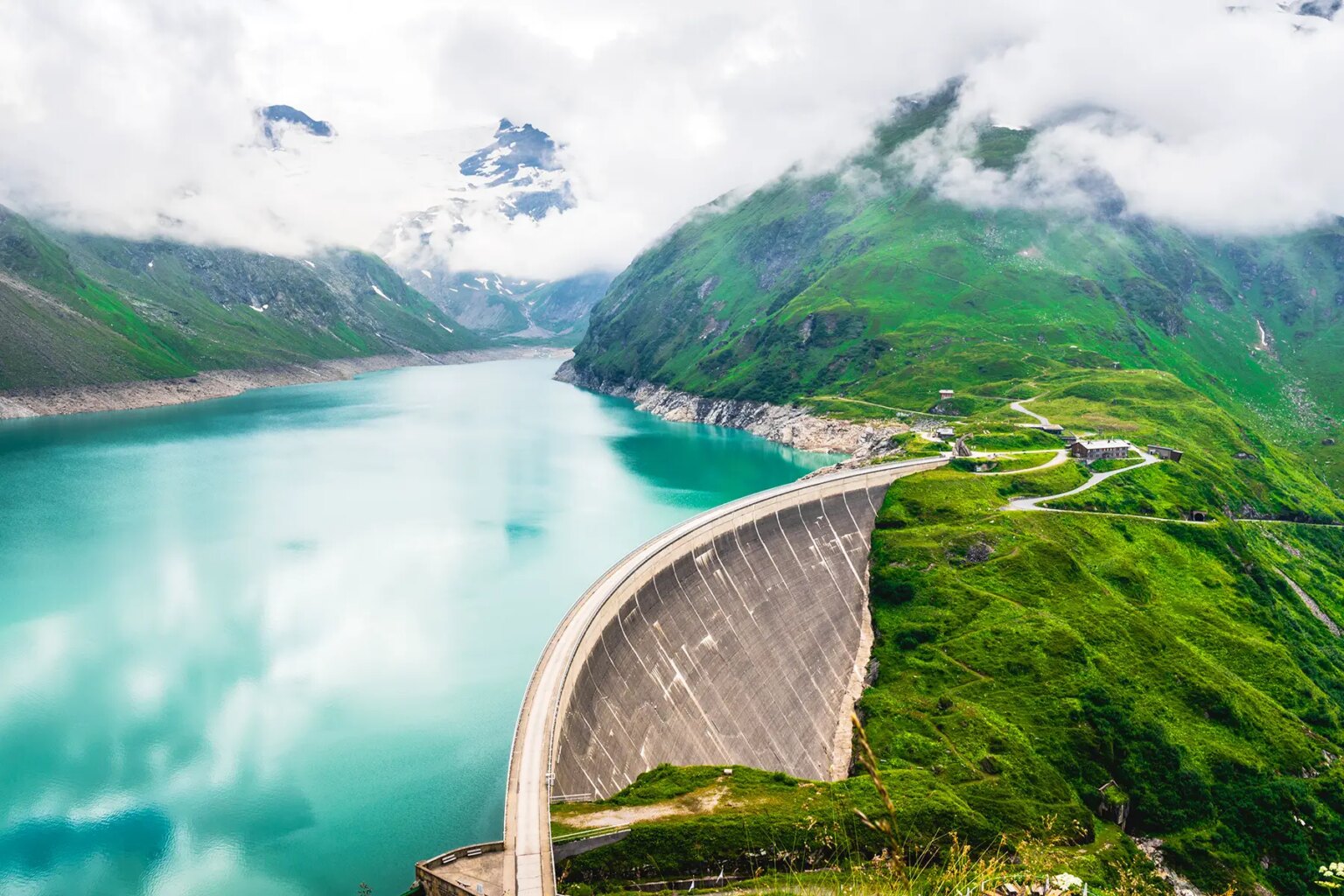When setting up your new life in Austria, one of the first things you’ll have to do is connect your home to all the local utilities. This includes your water, gas, and electricity supply. You’ll probably want to set up your home phone, internet, and TV, as well, so make sure you read our dedicated guide for more information.
Fortunately, connecting utilities in Austria is relatively easy, with a wide range of providers and packages for you to choose from. Whether you’re buying an alpine chalet or renting a city center studio, this helpful guide provides the following information:
Utilities in Austria
If you’re moving to Austria, you’ll be surprised at just how much choice you have when it comes to home energy. That said, understanding the local system can be confusing. Historically, the Austrian energy market was organized on a regional level, through local, state-owned gas and electricity monopolies that both operated the network and supplied energy. However, things have changed since the Austrian energy market was liberalized back in 2001. Nowadays, consumers have a lot more choice when it comes to plugging in at home, so it pays to shop around.

Water supply in Austria is provided at a local level so you won’t be able to choose a supplier; this will depend on the province you live in. You can contact your local municipality for more information on your water supplier and what you need to do to set up a new connection.
Getting connected in a new home
Whether you’ve just arrived in Austria or you’ve called the alpine nation home for decades, setting up utilities is probably high up on your list of things to do when moving into a new home. But, don’t worry. Getting a new property connected with utilities is relatively straightforward in Austria.
If you’re buying a new home, it should be possible to transfer utility services from the previous owner. This will save you the time and stress of finding a new supplier. However, these connections might not be the best option for you, so you might still prefer to switch at a later date. If your new home has no existing connections, you’ll need to set these up. Be aware that this can take a few weeks, so start the process ahead of time if possible.
If you’re renting in Austria, it’s possible that the landlord will already have the utilities connected. In this case, they will likely be included in your monthly payments. Your landlord should be able to provide you with information on these costs beforehand, should you need it. It’s important you clarify what you’re actually paying for before signing a contract. If utilities aren’t included in the rent, you’ll be able to sign up with the provider of your choice. In serviced apartments, utilities should be included within your rental payments for short-term leases.
Setting up electricity and gas in Austria
Austria has a well-developed energy network, serving homes and businesses across the country. To set up a gas or electricity connection in Austria, you’ll need two contracts:
- a network usage contract – set up with your local network operator
- an energy supply contract – set up with your chosen electricity or gas provider

Gas and electricity networks in Austria are still operated on a regional level by the former state-owned monopolies. As well as managing the network, these operators also offer energy supply. However, you don’t have to sign up for this. Generally speaking, you are free to choose the supplier of your choice, giving you the option to shop around for the best deal.
The electricity network is available across Austria, and the majority of properties are equipped with a smart meter. These can help you better manage your energy consumption, allowing you to make greener decisions regarding your usage. Gas is also widely available in Austria. However, in more rural and mountainous areas, connection to the gas network might not be possible. If this is the case for your property, you may want to consider installing a gas tank if one doesn’t already exist. Contact your local municipality for information on the requirements linked to installing one.
Energy suppliers in Austria
Following the liberalization of Austria’s energy market, there is now a number of regional and national providers for both gas and electricity. Many of these regional suppliers are the former state-owned monopolies that operate the local network. These operators still act as the default supplier for homes in their area, and you can choose to retain supply from the network operator should you wish.
However, remember that you aren’t obliged to have your energy supplied by these regional operators. Indeed, there is an ever-growing number of national energy suppliers that could provide cheaper deals, so make sure you do your research.
Rates can vary significantly between suppliers. Many offer combination packages should you wish you take out electricity and gas from the same supplier, as well as other products like district heating and even home internet. Some providers also offer greener energy options, ensuring you receive your household power from more sustainable, renewable sources. Regional and national energy suppliers in Austria include:
- AAE Naturstrom
- aWATTar
- Salzburg AG
- Schlaustrom
- Verbund
- Wien Energie
Knowing which supplier to choose can be challenging, especially for newly-arrived expats. However, it can pay dividends to shop around and compare the market in Austria. This will ensure you find the right provider for you and your needs.
Green energy in Austria
Looking to make greener choices in your new Austrian home? Thankfully, it’s easy when it comes to energy supply. In fact, Austria is one of Europe’s leaders when it comes to renewable energy. The country invests heavily in green energy and, as of 2022, had dedicated almost €3.5 billion toward sustainability initiatives. In terms of renewable resources, hydroelectricity is the most common form of green energy in Austria, while biomass and wind are also popular.

Unsurprisingly, the majority of Austrian suppliers offer green energy options and tariffs. This ensures you can be certain that your household energy usage comes solely from renewable sources. Because of the vast amount of green energy choices, it’s important to shop around before signing up. This will help you find the right green provider for you, from the moment you switch on.
Connecting your energy supply
Once you choose your Austrian energy supplier and tariff, it’s time to set up your connection. Signing up with an energy provider is fairly straightforward, and you can usually do it either via telephone or on the company’s website. To sign up, you’ll likely need to provide the following:
- proof of identity (passport or ID card)
- details of your Austrian bank account
- proof of address (rental contract, house deeds)
- smart meter ID (if applicable)
- meter point number (Zählpunktnummer)
The Zählpunktnummer is a 33-digit number that the local operator of the energy network assigns to each property, be it house or apartment. This number can be seen on the meter itself, as well as any electricity bill. You can also find out this number by calling the local network operator.
Once you have set up your contract with your new supplier, you’ll also need to contact your network operator to inform them. If these are the same company, this will likely be taken care of for you. However, if they are separate companies, you’ll also be able to register for your network usage contract. You’ll also need to contact your local network operator if you wish to set up a brand new connection. The process can take a few weeks, so try and arrange it as early as possible to avoid any disappointment.
Paying your energy bills
Before setting up your new home utility connections in Austria, it’s advisable to open a local bank account. Having an Austrian bank account will inform your provider that you have completed the registration form (Meldezettel) at your local municipality. This is a pre-requisite for opening an Austrian bank account. It will also ensure that automatic collections (direct debits) can be processed correctly.

Payment for Austrian energy bills is generally done via automatic collection directly from your bank account. Alternatively, you may be able to pay through bank transfer, depending on your supplier. You will usually pay bills throughout the year, either monthly or quarterly, depending on your provider. You’ll then receive an annual statement that compares what you’ve paid to the energy you’ve used.
Changing your energy supplier in Austria
Depending on your provider, you may not be able to switch energy suppliers during the first twelve months of your contract. However, if you are able to change, the process is fairly straightforward. Once you’ve found the right tariff and provider for you, you’ll find setting up utilities in Austria relatively easy. They will take care of the switchover, although you’ll need to provide meter readings to ensure a smooth transition. The process should take a maximum of three weeks and thankfully, you won’t be left without power during the procedure.
Making a complaint about an Austrian energy supplier
If you have any complaints about the meter, meter readings, or energy bill, you should contact your provider immediately. This will give your energy provider ample time to address any issues. They may then choose to send a technician to your home, should you have an underlying issue with your meter or connection. Details of your supplier’s complaint process can be found on the company’s website.
Energy suppliers in Austria are regulated by E-Control, the government’s regulator for the energy and natural gas market. If you have a complaint about your energy provider, or your initial complaint has not been resolved, you can contact E-Control’s Board of Arbitration. Using this service, you’ll be able to submit all the required information and documents to move forward with the complaint process. However, be aware that much of the website is only available in German.
Austrian voltage and power plugs
When moving to Austria, be sure that your electronic goods are compatible with the local voltage in your new home. In Austria, this is around 230V (50Hz) – the standard voltage for much of Europe. However, this is significantly higher than in many non-European countries, so check your appliance ahead of time to avoid any issues or disappointments. You may need to invest in new appliances or a transformer to avoid any dangerous burnouts.
Sockets in Austria are like the rest of Europe, with two-pin plugs and sockets (Type C and the older Type F). If your appliances are not compatible with these sockets, you’ll need to invest in a power adapter. These can be bought at all good electrical outlets.
Power cuts in Austria
Power cuts are fairly uncommon in Austria but they do occasionally happen, particularly in more rural, mountainous areas. Make sure you keep some candles in the cupboard just in case you experience a blackout. If your power goes, check if the street lights are working and if your neighbors have power. If it’s just your house, check your fuse box to see if a fuse has tripped or blown.
However, if the entire neighborhood is out, you might want to contact your regional network operator. You can inform them of the issue and find out when they expect the problem to be addressed. You’ll find contact information on your local operator’s website, or on any correspondence that you’ve received from them.
Water supply in Austria
Due to its lofty alpine location, the water quality in Austria is among the highest in the world. Thankfully, if you’re an expat living in Austria, setting up your home water connection is easy to do. Water supply is administered at a local level, and you aren’t able to choose your provider. For more information on your local water provider and how to establish a brand-new connection, search online or contact your local municipality.

When signing up, you’ll need to give your local municipality’s water department your contact information and, if necessary, a meter reading for the day you move in. Your local water department may wish to send a technician to your home, although this isn’t always necessary.
Paying your water bill
Generally speaking, your water payments will be included as part of your operating costs (Betriebskosten). This typically also includes wastewater services, household waste collection, and other taxes. If you’re renting, this is a separate charge from your rental payments.
Austrian tap water
Tap water in Austria is of high quality throughout the country and is tested regularly by local water providers. Water hardness varies substantially across the country. Typically, Vienna and the east have harder water, while the south and west of the country enjoy softer tap water. Should you want to soften your water, you can purchase a water filter relatively easily.




